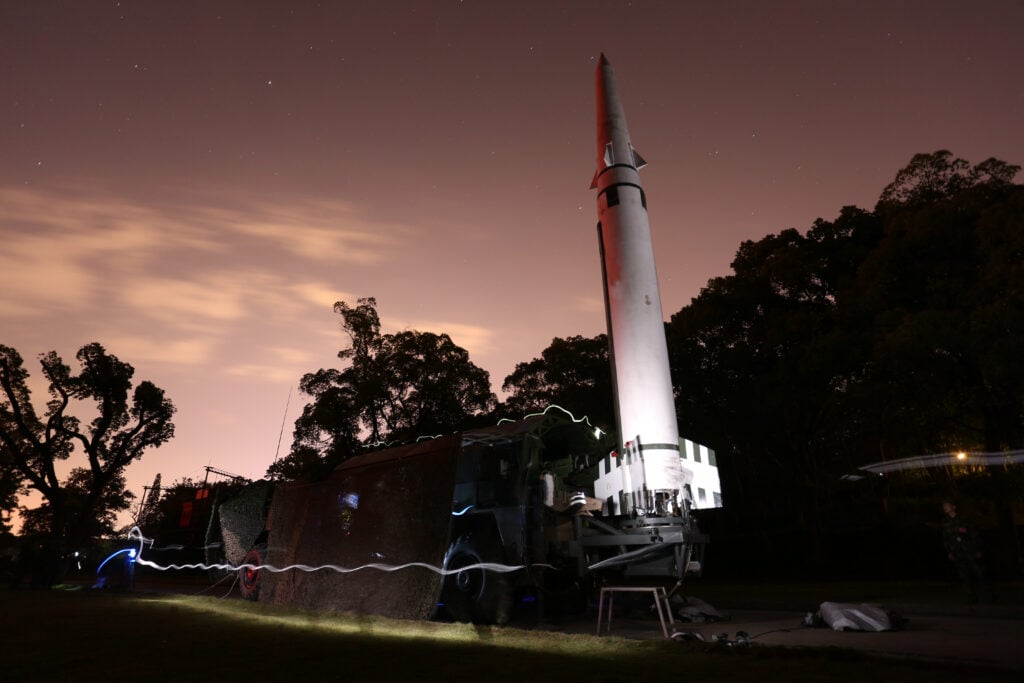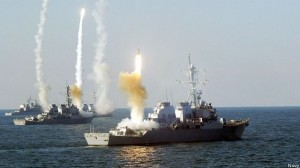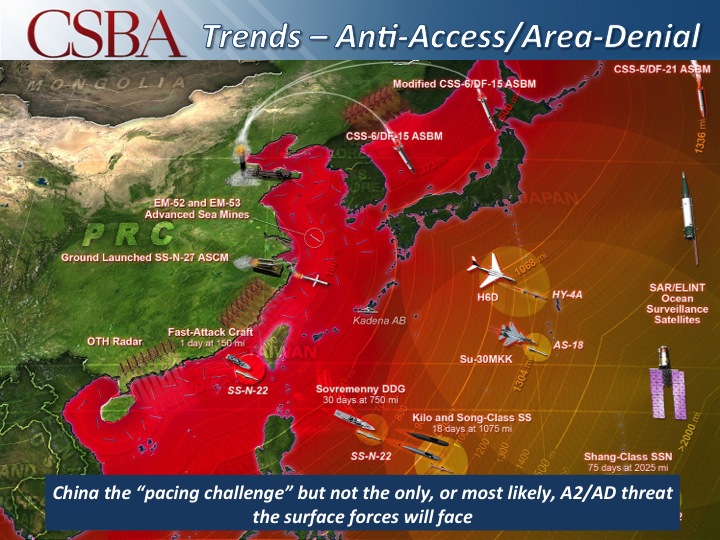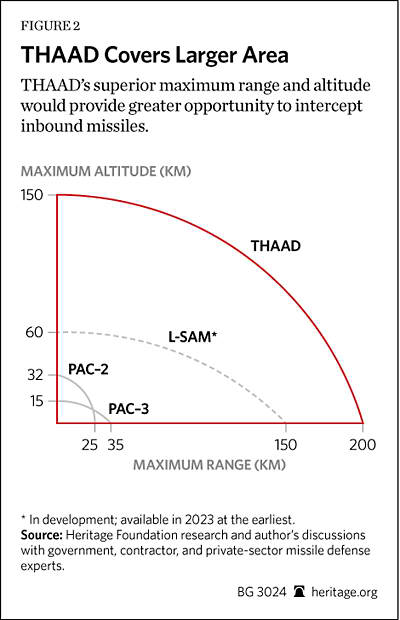Chinese Missiles Can Wipe Out US Bases In Japan: Aegis, THAAD Can Stop Em
Posted on

Chinese DF-15B Short-Ranged Ballistic Missile (SRBM) during PLA Rocket Force exercise.
WASHINGTON: A Chinese surprise attack tomorrow could annihilate US forces and bases in Japan, two Navy officers found. But deploying more missile defenses — Army THAAD and Navy Aegis — would protect most targets north of Okinawa, Commanders Thomas Shugart and Javier Gonzalez found in simulations. Such a stronger defense, in turn, would reduce the temptation for Beijing to strike first in a crisis.
This scenario isn’t implausible. Chinese history and doctrine since 1949 show a marked preference for surprise attack. They struck Korea in 1950, India in 1962, Vietnam in 1974 and ’79. The Chinese usually justify their attacks as a defensive response to actions that threaten their sovereignty or vital interests. But those vital interests are defined very broadly — e.g. Beijing’s claim to the entire South China Sea — and armed force is seen as a legitimate response to purely political, non-violent provocations.

Navy Aegis ships can shoot down incoming missiles
The temptation to preempt would be particularly great in a crisis with the United States. If the Americans have fair warning, they can get their planes in the air and their ships out to sea, with their defensive systems turned on. However, a massive surprise attack by land-based ballistic missiles followed up by cruise missiles and airstrikes could cripple aircraft on the ground and ships in harbor, where they’re sitting ducks. Such a massive conventional strike is the primary purpose of China’s Rocket Force, formerly the Second Artillery, which was made an independent armed service in 2016. Commercial satellite imagery of Chinese missile test ranges near the Gobi Desert show they’ve fired test shots at mock-ups of airfields and life-sized outlines of ships, positioned in the same configuration as the US Navy piers in Yokosuka, Shugart and Gonzalez told the Center for a New American Security conference today.
The two commanders did their study on their own initiative, not at Navy direction, and using publicly available sources and simulations, not classified military data. (Shugart is currently a Navy fellow at CNAS, Gonzalez at the Johns Hopkins University Applied Physics Laboratory). But there’s plenty of information out there.
Using public data on US bases in Japan to find targets and published Chinese doctrine to prioritize them, they came up with 500 targets: airfields and ports, command posts, communications equipment, fuel tanks, and all the other essential infrastructure of military operations. China has enough munitions to destroy all of them.

Chinese weapons ranges (CSBA graphic)
China’s estimated 1,200 short-range ballistic missiles (SRBMs) can hit Okinawa, the largest single cluster of US bases, which is also the closest to China. China’s 200 to 300 medium-range ballistic missiles (MRBMs) can reach all of Japan. These missiles could hit their targets within about 15 minutes of launch. Then a second, slower wave of bombers and ground-launched cruise missiles would hit whatever the first wave missed. Special penetrating warheads would crack hardened bunkers, while “cratering” submunitions would rip up runways to trap aircraft on the ground.
There are some Patriot missile batteries and Aegis ships in Japan today, primarily aimed at a potential North Korean strike, but Shugart and Gonzalez say they’d be overwhelmed by a Chinese assault. Even if the defenses work perfectly, they will run out of interceptors. There’s promising research on lasers, rail guns, and other weapons that can keep firing much longer — as long as the power holds out, for lasers — but these aren’t deployable today. So Shugart and Gonzalez looked at missile defense systems available today.
What would it take to stop an all-out Chinese salvo? Two more Patriot batteries, two more Aegis ships, and — most crucial — five THAAD batteries. The Amy’s Terminal High-Altitude Air Defense system can shoot down targets that fly too high for Patriot to touch, and it also has longer range.

THAAD coverage compared to Patriot and Korean L-SAM (Heritage Institute graphic)
Even if the US deploys these additional defenses, Okinawa is still in trouble. It’s too close to China and in range of too many kinds of missiles. “We still found that the Okinawa defenses would still be overwhelmed… but at least damage was mitigated,” Gonzalez said. On the other hand, “the ballistic missiles heading to…the mainland of Japan were mostly intercepted.”
The problem with this plan is it requires five THAAD batteries, when the Army only has six in service worldwide, and one of which is committed to South Korea. (Just one more THAAD battery is being built under current contracts). Unless the US is willing to strip missile defenses from other regions of the world to protect Japan — and both Russia and Iran have invested heavily in long-range missiles — we’d need to buy more THAAD.
That’s a worthwhile investment, Shugart argued. Admittedly, we’re shooting down relatively cheap offensive missiles with relatively expensive interceptors. It’s easier to hit an airfield than a missile moving hundreds of miles an hour, so it takes a $3 million Patriot to shoot down a $1 million Scud. (Lasers could help with this problem too. The laser weapon itself is expensive, but the cost per shot is pennies). But you have to count the cost of what the incoming missiles would destroy, as well. “A few billion dollars” of missile defense, Shugart said, could save “tens of billions of dollars of ships, aircraft, facilities, (and) lives.”
Subscribe to our newsletter
Promotions, new products and sales. Directly to your inbox.
